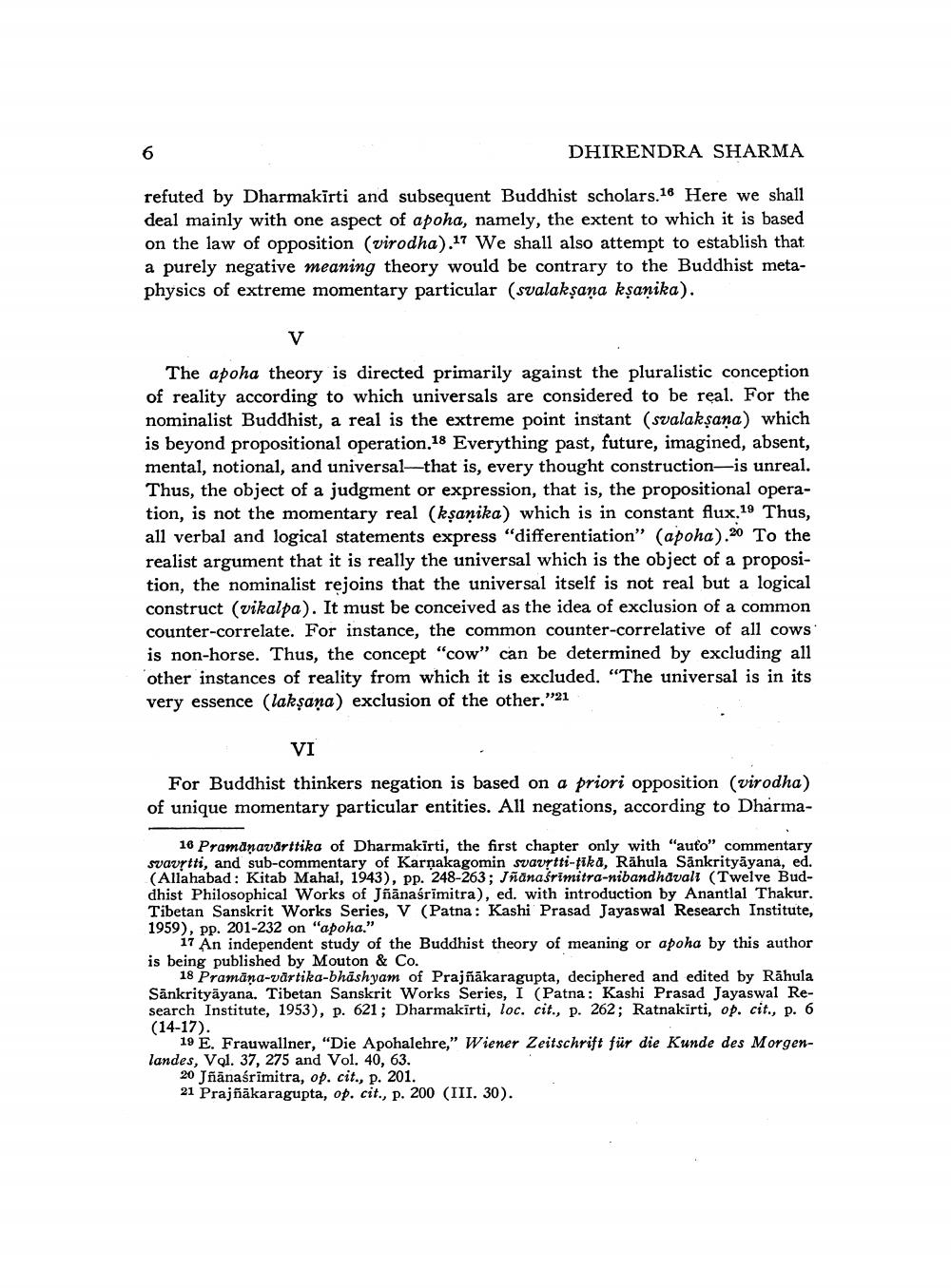________________
6
DHIRENDRA SHARMA
refuted by Dharmakirti and subsequent Buddhist scholars.16 Here we shall deal mainly with one aspect of apoha, namely, the extent to which it is based on the law of opposition (virodha). We shall also attempt to establish that a purely negative meaning theory would be contrary to the Buddhist metaphysics of extreme momentary particular (svalakṣana kṣanika).
V
The apoha theory is directed primarily against the pluralistic conception of reality according to which universals are considered to be real. For the nominalist Buddhist, a real is the extreme point instant (svalakṣana) which is beyond propositional operation.18 Everything past, future, imagined, absent, mental, notional, and universal-that is, every thought construction-is unreal. Thus, the object of a judgment or expression, that is, the propositional operation, is not the momentary real (kşanika) which is in constant flux,19 Thus, all verbal and logical statements express "differentiation" (apoha).20 To the realist argument that it is really the universal which is the object of a proposition, the nominalist rejoins that the universal itself is not real but a logical construct (vikalpa). It must be conceived as the idea of exclusion of a common counter-correlate. For instance, the common counter-correlative of all cows is non-horse. Thus, the concept "cow" can be determined by excluding all other instances of reality from which it is excluded. "The universal is in its very essence (lakṣaṇa) exclusion of the other."21
VI
For Buddhist thinkers negation is based on a priori opposition (virodha) of unique momentary particular entities. All negations, according to Dharma
16 Pramāṇavärttika of Dharmakirti, the first chapter only with "auto" commentary svavṛtti, and sub-commentary of Karnakagomin svavṛtti-tikā, Rahula Sankrityayana, ed. (Allahabad: Kitab Mahal, 1943), pp. 248-263; Jñanasrimitra-nibandhavali (Twelve Buddhist Philosophical Works of Jñanaśrimitra), ed. with introduction by Anantlal Thakur. Tibetan Sanskrit Works Series, V (Patna: Kashi Prasad Jayaswal Research Institute, 1959), pp. 201-232 on "apoha."
17 An independent study of the Buddhist theory of meaning or apoha by this author is being published by Mouton & Co.
18 Pramana-vārtika-bhashyam of Prajñākaragupta, deciphered and edited by Rahula Sankrityayana. Tibetan Sanskrit Works Series, I (Patna: Kashi Prasad Jayaswal Research Institute, 1953), p. 621; Dharmakirti, loc. cit., p. 262; Ratnakīrti, op. cit., p. 6 (14-17).
19 E. Frauwallner, "Die Apohalehre," Wiener Zeitschrift für die Kunde des Morgenlandes, Vol. 37, 275 and Vol. 40, 63.
20 Jñanaśrīmitra, op. cit., p. 201.
21 Prajñākaragupta, op. cit., p. 200 (III. 30).




